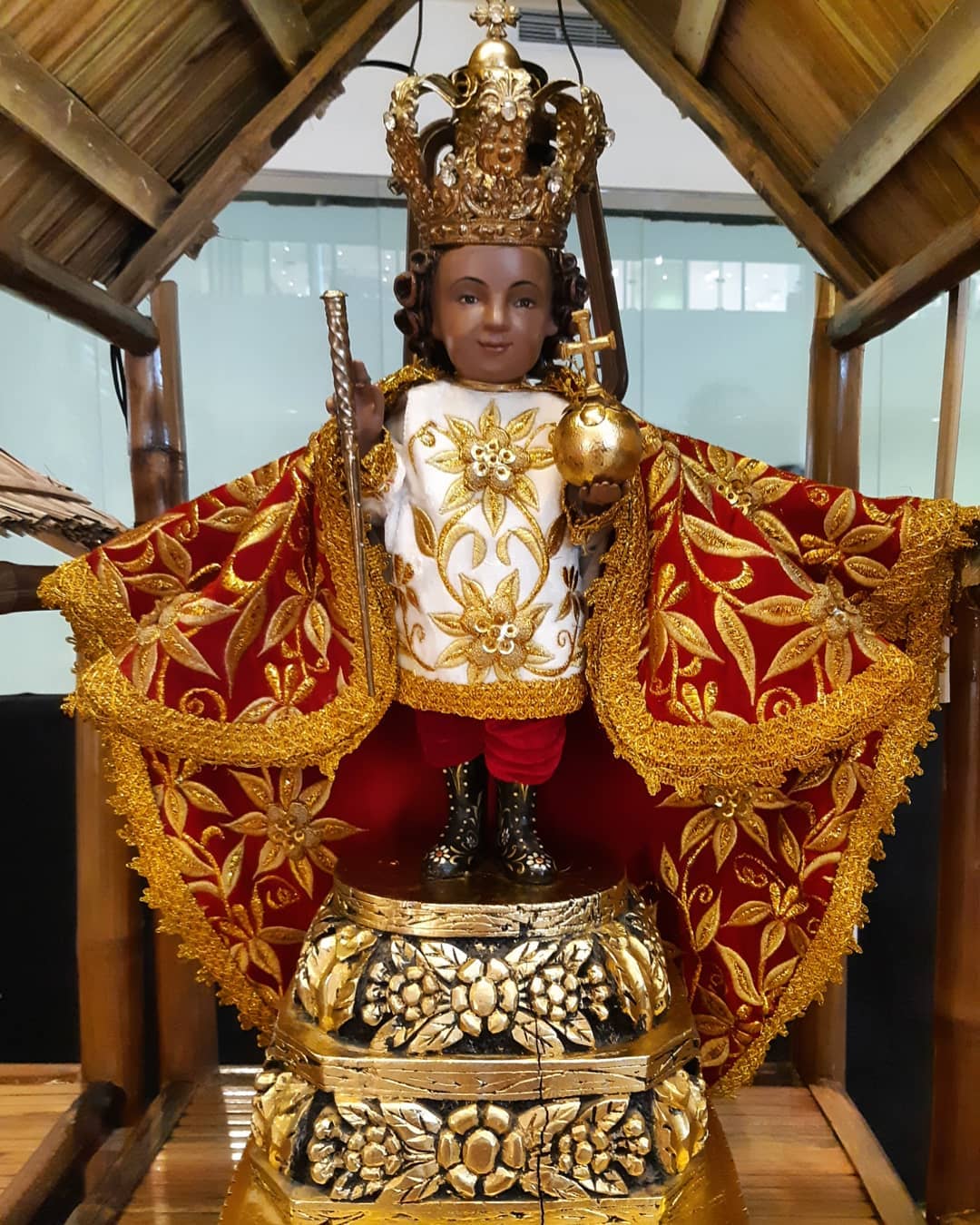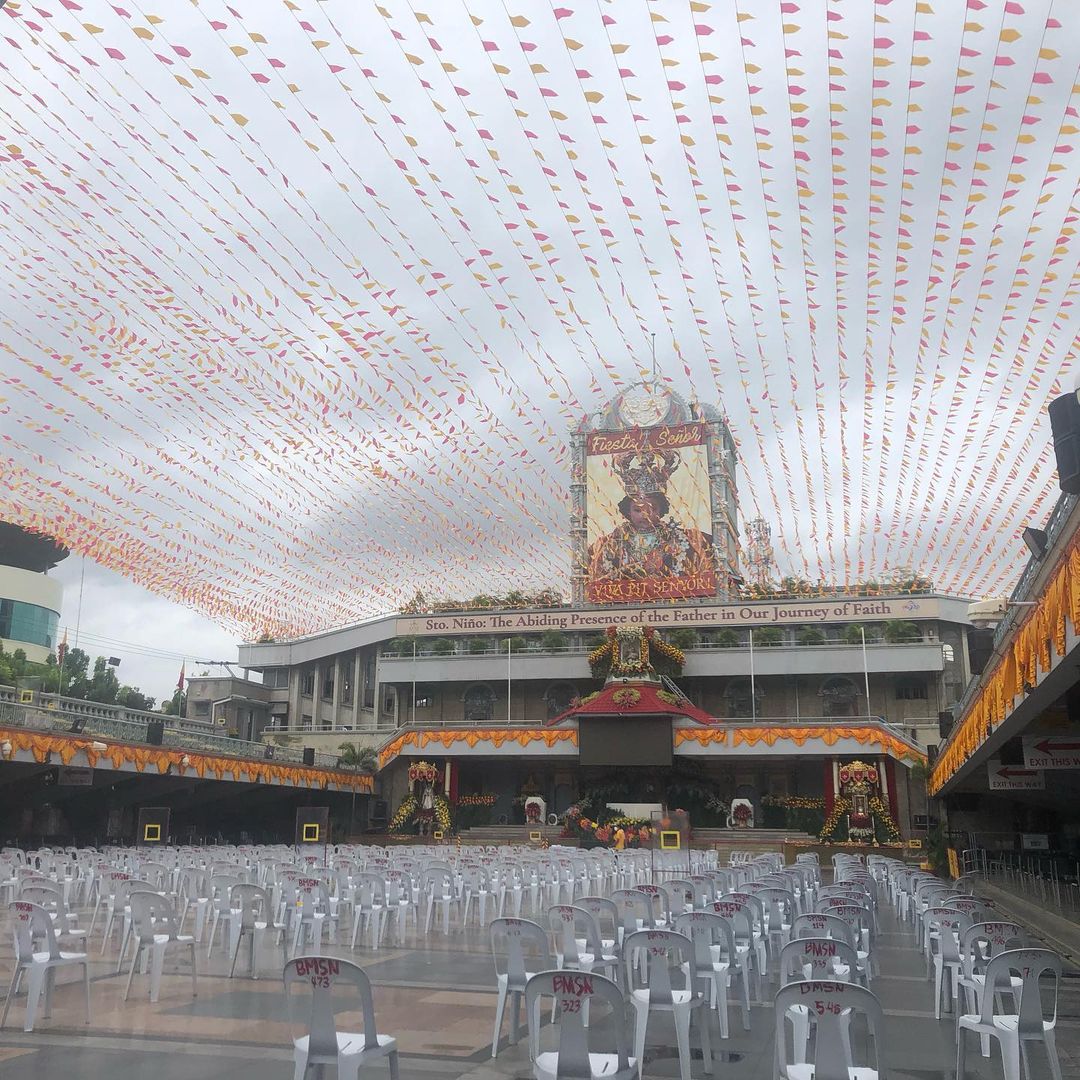Dancing Santo Niño figure in Cebu
At Barangay Caw-Oy in Olango Island in Lapu-Lapu City, Cebu, devotees traditionally bathe a Santo Niño figure, called the Santo Niño Kaplag, in a basin filled with coconut water 10 days before the Sinulog festival.
Cebu’s annual Sinulog festival honors the infant Jesus, of whom churches and households often have figurines that of course, usually stay still. But this year, to devotees’ delight, the tradition was seemingly marked by a miraculous event where the figure appeared to dance while being bathed.
The Santo Niño was seen turning in a basin

Image credit: Edra Len Apa
In a video shot by a resident, the figure of Santo Niño, which is in the middle of a basin filled with coconut water, is seen turning in the water.

Image credit: Maribel Inoc
It’s as if the figure were dancing by itself, and the residents who witnessed it were all left in shock and tears.
It wasn’t the first time it happened, according to residents

Olango Island, Cebu
Image credit: @itsellenjp
It wasn’t the first time the figure was seen moving, according to residents. This phenomenon had also happened before in 2009, the year after the figure was found onshore and brought to the barangay in 2008, but they had not been able to capture the incident with their phones back then.
They named the figure Santo Niño Kaplag due to the circumstances in which it was found, as kaplag is a Bisaya word that means “discover” in English.

A young coconut containing coconut water
Image credit: Crisco 1492/Wikimedia Commons
And ever since it was found, the residents have been bathing the Santo Niño Kaplag in coconut water, believed to be able to cure illnesses, even serious ones. They have also built a chapel for the Santo Niño.
The movement can be explained through a physics phenomenon
However, a physicist has commented that the figure’s movement is just a result of a physics phenomenon.
According to physicist Micahella Sarmiento who was interviewed on TV talk show Kapuso Mo, Jessica Soho, an object’s center of mass can shift when it’s placed on an uneven surface such as a plate. This shifting may be the reason why the Santa Niño figure was moving.
 A Santo Niño figure
A Santo Niño figure
Image credit: @soitsmayejoedy
“Kasi po kapag may plato po, uneven po ‘yung surface. Kapag uneven po ang surface, ang tendency ng isang body, magshi-shift po ang tinatawag nating center of mass. Maaari po iyong maging factor kung bakit po gumagalaw ‘yung Sto. Niño po natin,” Sarmiento explained.
(Because when there’s a plate, its surface is uneven. When the surface is uneven, a body of matter’s center of mass will tend to shift. This may be a factor as to why the Santo Niño figure is moving.)
Sarmiento added that the figure’s material could have also been a factor in the movement, as there are certain types of stone that can float in water, such as pumice.
And if an object has less density than a fluid, it also has a tendency to float.

Inside the Basilica Minore del Santo Niño de Cebu
Image credit: @mavsuico
Cebuanos’ devotion to Santo Niño
Stories about the supposed miracles of the figure of Santo Niño, or infant Jesus, have always been embedded into the religious beliefs of some Cebuanos.
And while the Catholic Church hasn’t recognized these events as miracles, any manifestation of something divine may well give the faithful some optimism and hope for the future.
Also check out:
- Dancing titos jive their way to 1M followers on TikTok
- 8 extremely old buildings in the Philippines
- 9 types of candles in the Philippines & where to buy them
- 9 European-style places in the Philippines
Cover image credit: Edra Len Apa

Drop us your email so you won't miss the latest news.






